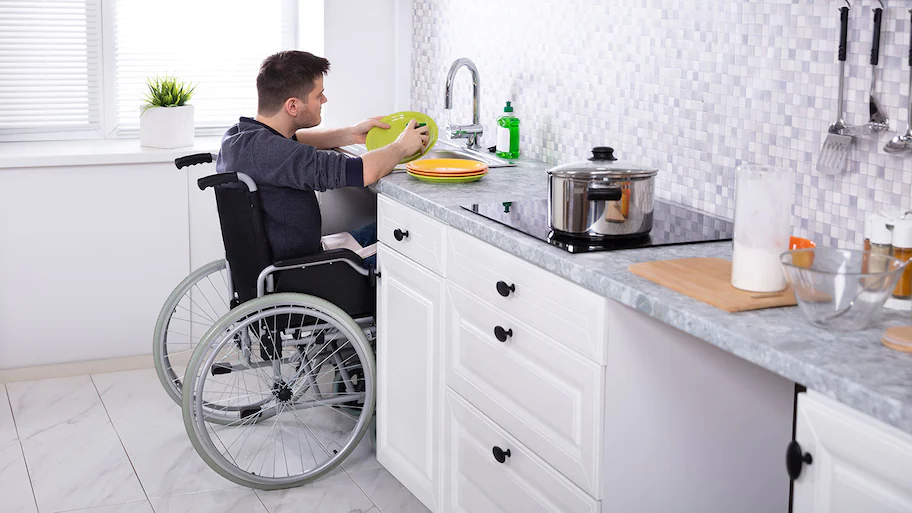Living with a disability shouldn’t hinder your quality of life. There is a range of simple changes you can make to make your home more inclusive.
In the US, about 61 million people are living with disabilities. Some are brought on by aging, others are lifelong, and some are temporary. Visual impairment, hearing impairment, cognitive impairment, and physical impairment are the four disability family types.
For the sake of this blog, we propose house updates that can help those with visual and physical impairments.
House Flooring
Updating your flooring for more accessibility is a crucial step. Slippery materials and area rugs put people at a higher risk of falls. Unfortunately, carpet is difficult to navigate for an individual in a wheelchair.
A flooring material with slip-resistant qualities, like vinyl or rubber-based flooring, is best. Bright patterns and colors can be challenging to navigate for visually impaired people, so it’s better to stick with a muted finish.
Also, consider the thresholds between rooms. Install low-barrier or zero-barrier connections between rooms for optimum movement.
Lighting
For those with visual impairments, it’s best to transition gradually from light to dark. Dimmers are an excellent option for increasing the accessibility of your home. Add light to areas where natural light doesn’t reach. Hallways, corners of rooms, and closets likely need additional lighting.
Good lighting is also essential for our independent aging population. Consider putting lights on motion sensors so that lights come on automatically as you move around your house. Our team can help you determine what is best for your home.
Color Blocking Design
Create color-blocked areas by using contrasting paint and decor. Contrasting colors ensure safety for anyone visually impaired. It will help them identify specific areas, navigate the space, and differentiate between room features and furniture.
Light Switches and Outlets
Can you imagine not being able to reach a light switch or outlet? We use electricity daily, so making sure they are accessible is very important.
Align light switches with door handles to create access for your loved one in a wheelchair. Avoid putting sockets closer than fourteen inches from the corners of the room. The tight space is hard to navigate.
During the renovation, consider the placement of phone outlets, cable, or tv outlets.
Ramps (Wheelchair Ramps)
Most homes have at least a few steps up to the front door. Adding a ramp to the exterior of your house is a traditional solution for overall access.
Grab Bars and Handrails
Install handrails in areas with extreme movements, like the stairs. The bathroom is one of the most dangerous areas of the home due to water. But it’s one of the most important to maintain independence when possible. Grab bars ensure stability in the shower and toilet.
Create Wider Doorways And Hallways
Expanding your doorways and hallways may be necessary to make your home wheelchair accessible; ideally, doors should be at least 36 inches wide.
Other Things to Avoid
When making updates look for controls, handles, and pulls that are operable with a clenched fist and/or without using both hands. Many essential household functions require finger dexterity – like round door knobs. Door knobs can easily be swapped for lever handles for easier access. Avoid bland, indistinguishable colors. Remove bath mats if someone is prone to tripping, but ensure the bathroom floor remains dry.
Home improvements for the disabled — or the elderly — start with assessing the individual’s needs. Sometimes the assessment from an occupational therapist (OT) can be helpful. We’re happy to meet in person and discuss daily routines to determine the most significant changes for your home.
Once you know what you want to change, think about your budget and options. We have an entire blog on grants HERE. Some may qualify for tax deductions as medical expenses.
Our modifications help you live better, function more autonomously, and find respite at home. We’ll help you Thrive.
Tags: assisted living, mobility and rehab, independent living, home modifications

